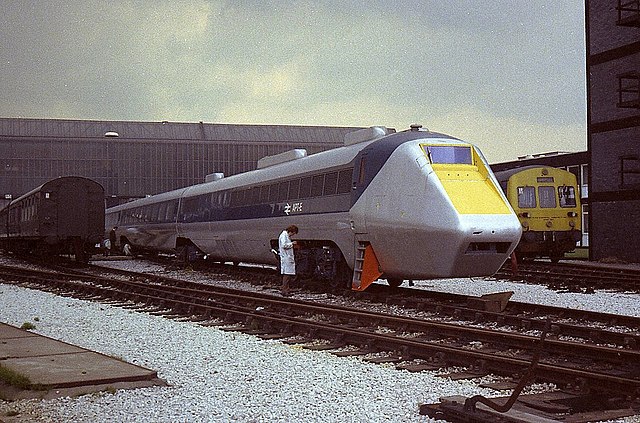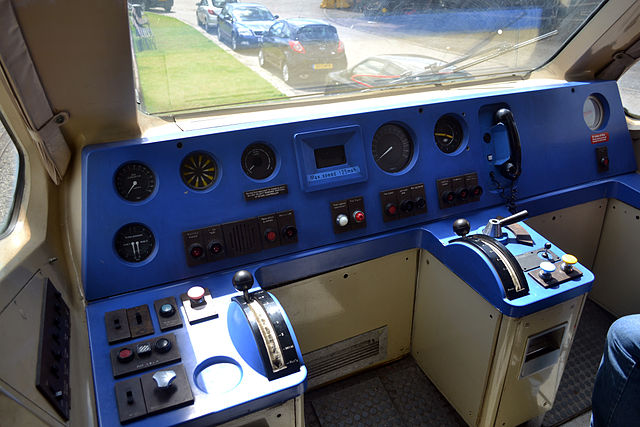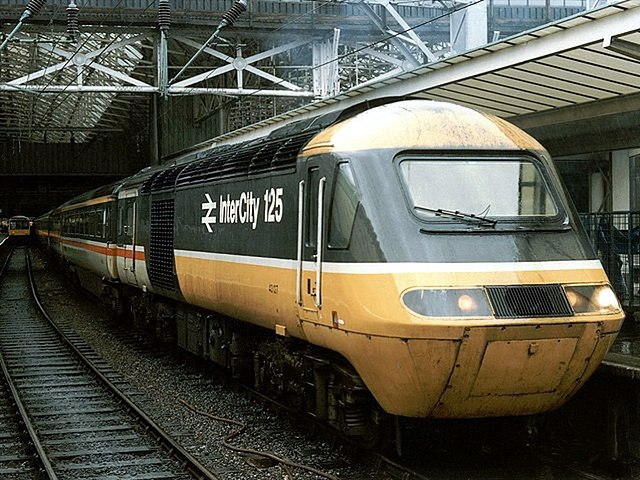British Rail's Class 370 tilting trains, also referred to as APT-P, were the pre-production Advanced Passenger Train units. Unlike the earlier experimental gas-turbine APT-E unit, these units were powered by 25 kV AC overhead electrification and were used on the West Coast Main Line between London Euston and Glasgow Central. The APT-P is the most powerful domestic train to have operated in Britain, the eight traction motors fitted to the two central motor cars giving a total output of 8,000 hp (6,000 kW). This enabled the train to set the UK rail speed record of 162.2 mph (261.0 km/h) in December 1979, a record that stood for 23 years until broken by a Eurostar Class 373 on the newly completed High Speed 1 line.
Class 370 at Carlisle
First-class saloon in a preserved vehicle. (The plain blue seat covers are post-withdrawal replacements for the original tartan material.)
The Advanced Passenger Train (APT) was a tilting high speed train developed by British Rail during the 1970s and early 1980s, for use on the West Coast Main Line (WCML). The WCML contained many curves, and the APT pioneered the concept of active tilting to address these, a feature that has since been copied on designs around the world. The experimental APT-E achieved a new British railway speed record on 10 August 1975 when it reached 152.3 miles per hour (245.1 km/h), only to be surpassed by the service prototype APT-P at 162.2 miles per hour (261.0 km/h) in December 1979.
APT-E in the RTC sidings between tests in the summer of 1972
Driving controls of the Advanced Passenger Train (APT-P) at Crewe Heritage Centre.
Superelevation was applied to portions of the BR network, although the angle was limited. Here, an InterCity 225, based on APT technology, rounds a canted turn on the East Coast Main Line.
In contrast to APT, HST was a huge success.






